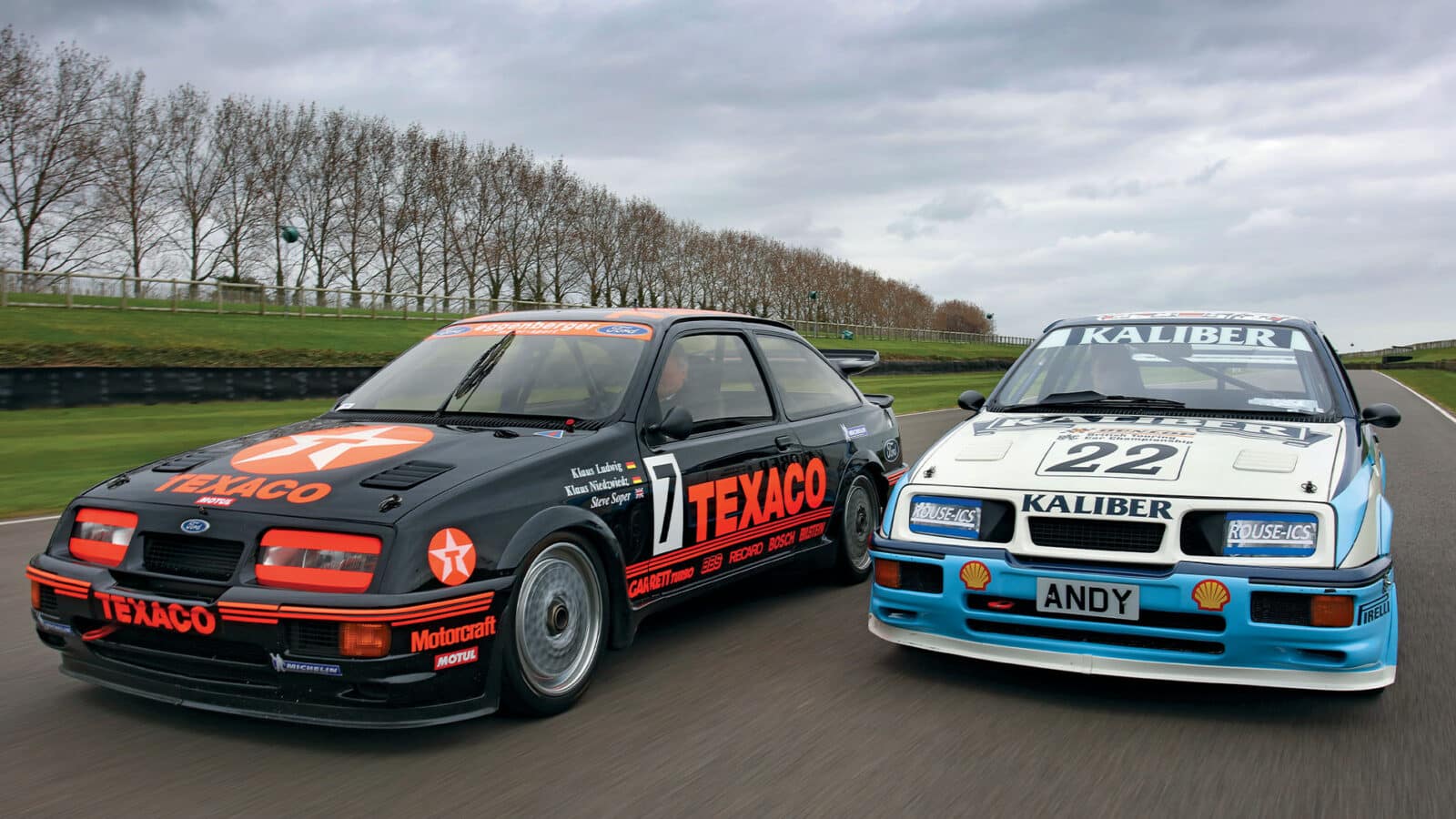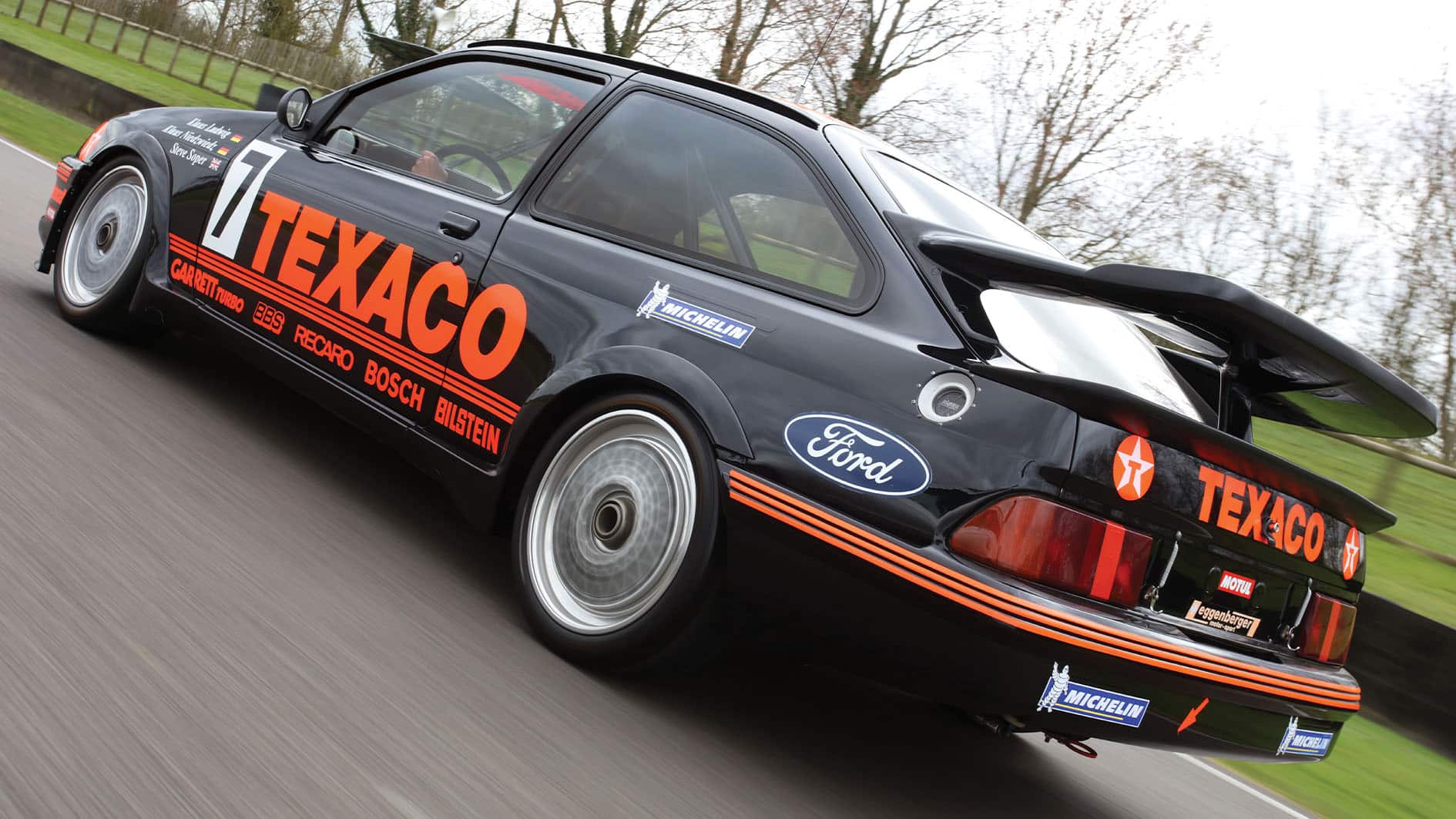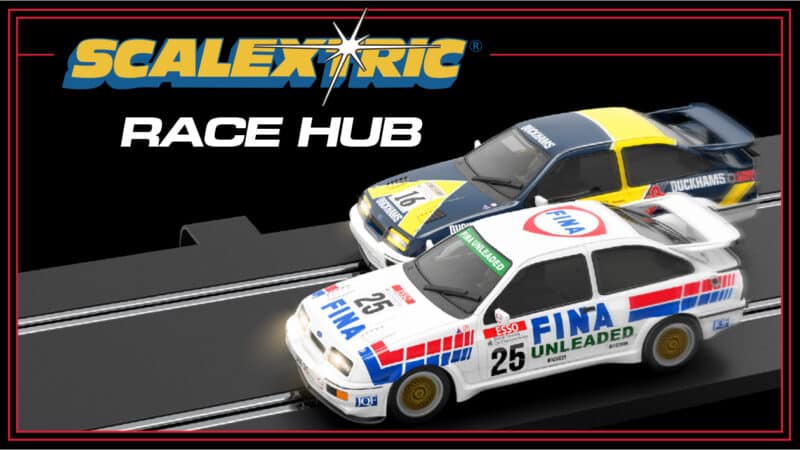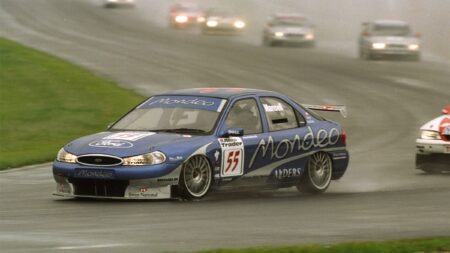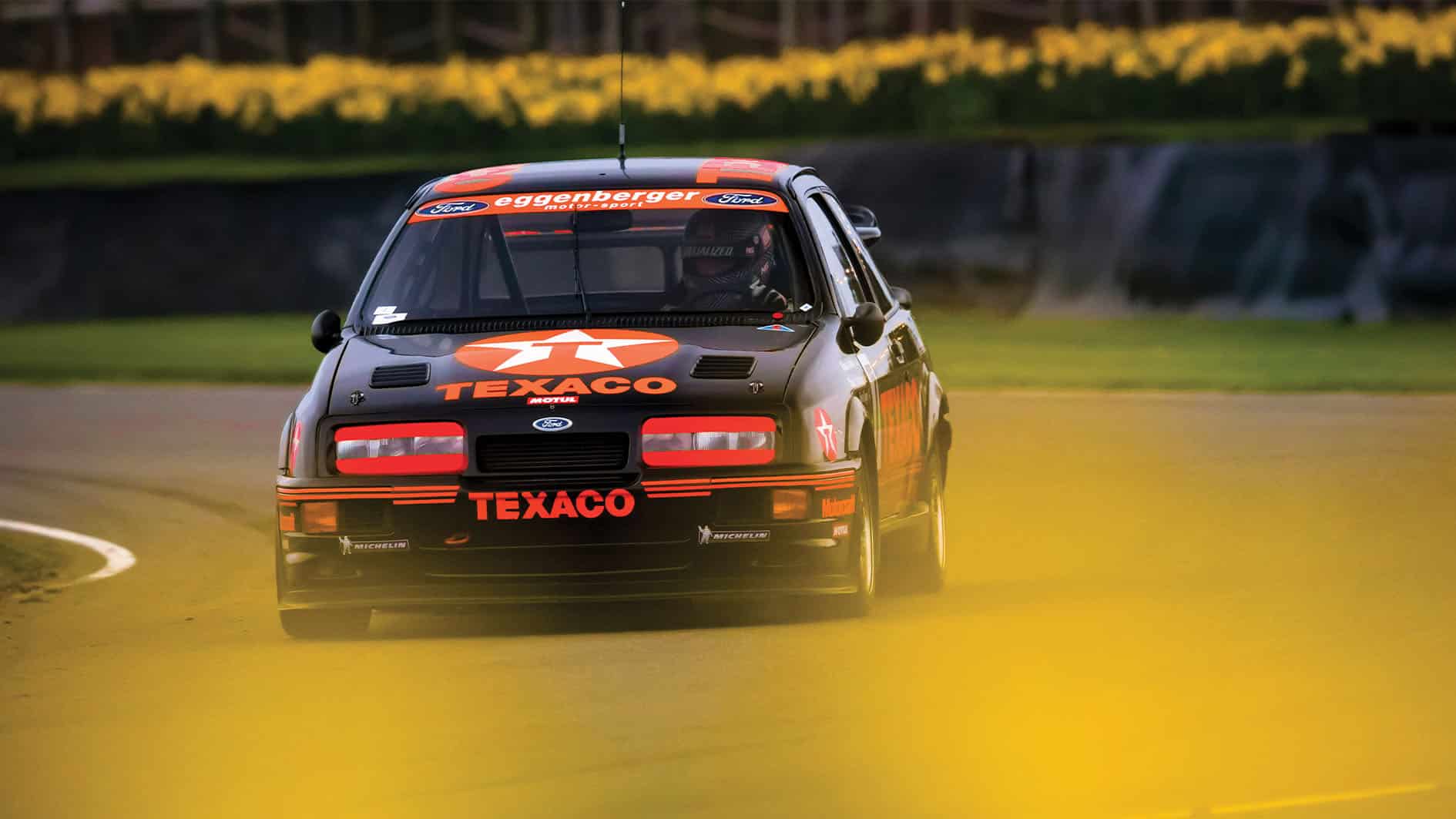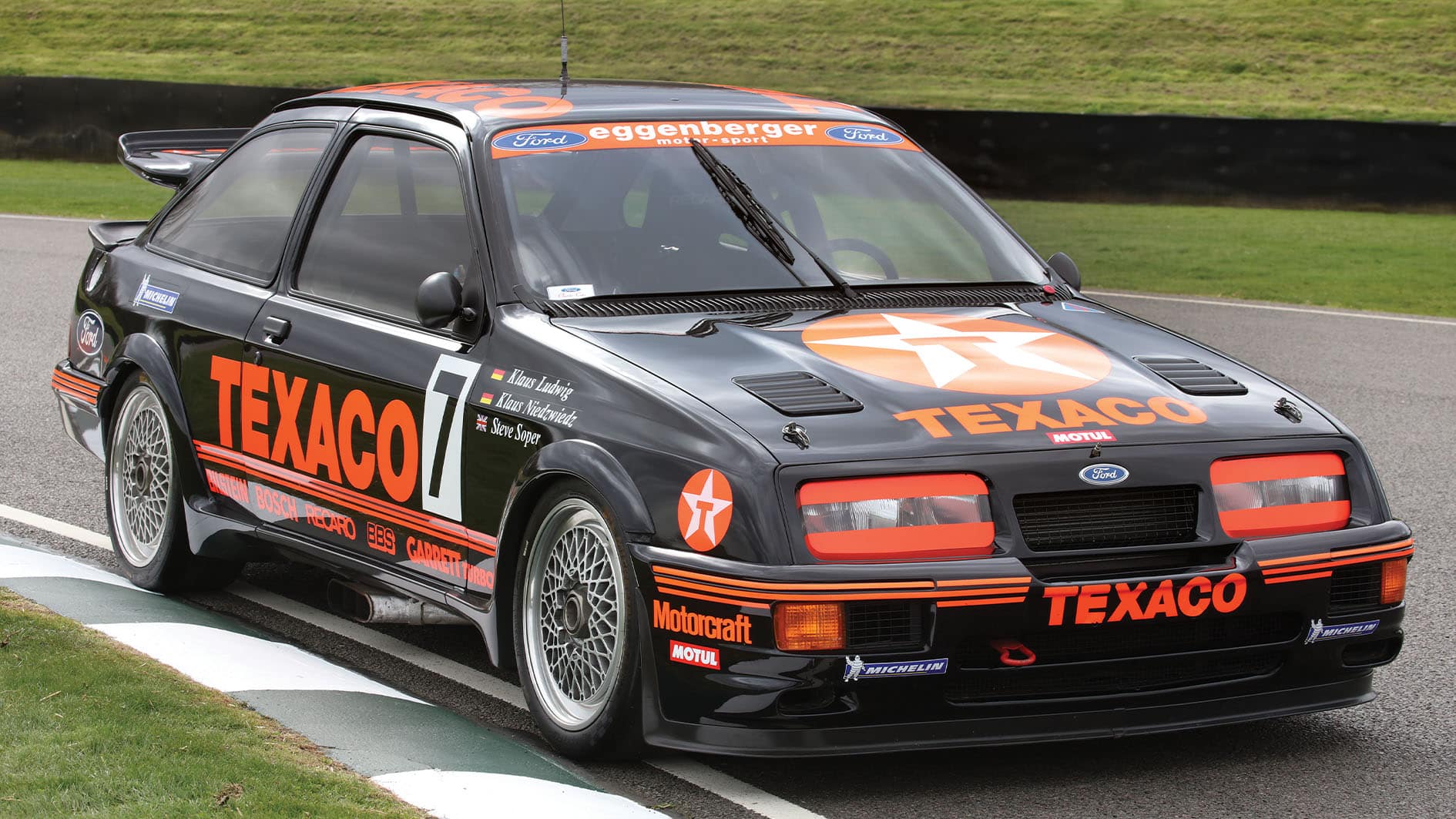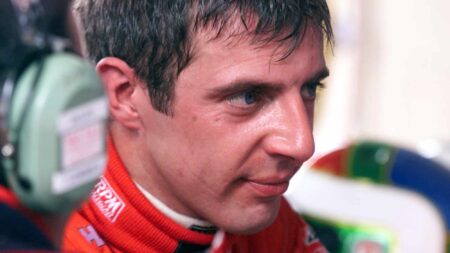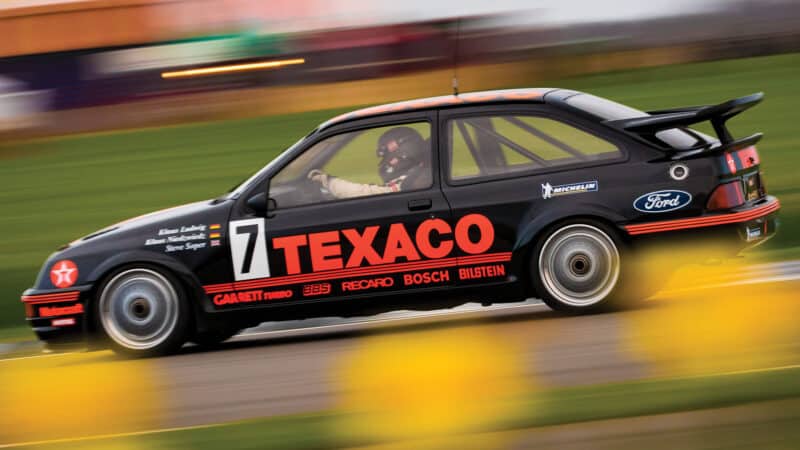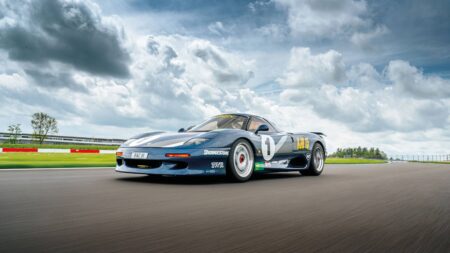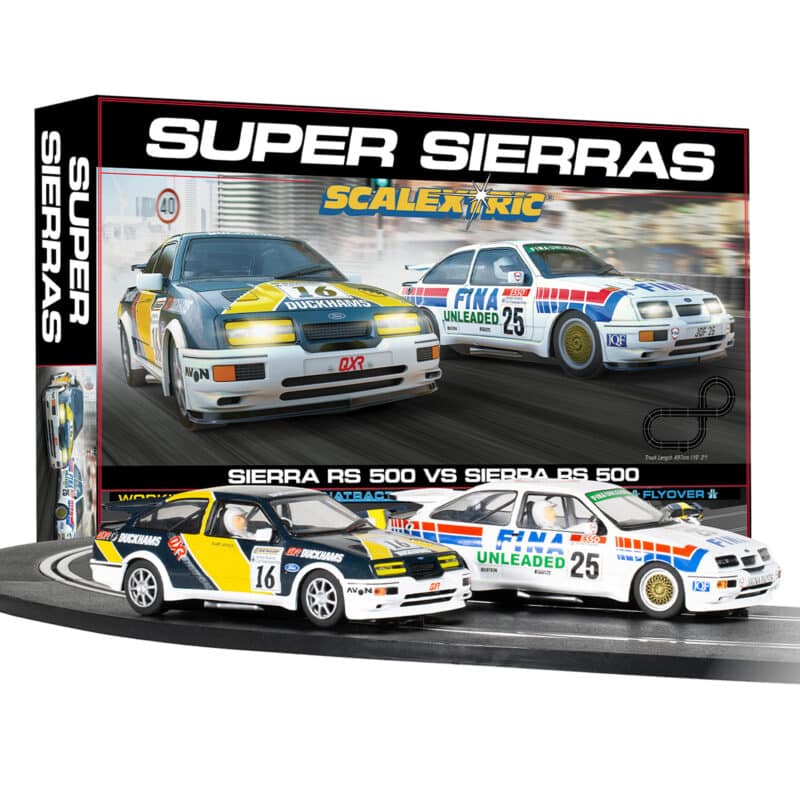This is a proper Touring Car. No fancy carbon fibre, no dazzling multi-coloured shift lights or myriad switches. Just brittle Eighties-spec showroom standard Ford plastics for the dashboard and door cards, the latter with diagonal slices removed to allow room for the door to close against the roll cage. There’s just one instrument set within the red anodised binnacle – an analogue white-on-black tacho – with a basic LCD display to its left. A suitcase-sized Bosch management system occupies most of the passenger footwell.
The car smells just like an old racing car should. That’s to say a blend of stale sweat, fuel and tyre rubber. Sounds nasty, but if you could bottle it I’d buy it. By now Karsten is crouched at the open driver’s door giving me the shortest of pre-flight briefings. Then it’s a case of flicking down the ignition toggle, pressing the small black starter button and waiting for the famous 2.0-litre turbocharged engine to spin into life.
When it does the cockpit pulses with tingles and distant resonances. I give the throttle a firm squeeze and the side-exit exhaust emits that unmistakable spooly blare and cackle as the revs rise and fall. The clutch is weighty, but not too sharp. The gearlever feels heavily sprung in its H-pattern gate, but a dry run up and down the ’box reveals a solid, strong and precise shift.
Pulling the lever towards me and back, I slot it into dog-leg first, feed in the power and pull away. At low revs the engine feels half-asleep, becalmed in a low compression lull, but as the revs build so does the boost. Aware the slicks are stone-cold I short-shift to second to take the sting out of the spike in power. There’s another lull until the boost builds again and the motor – good for more than 500bhp in sprint race trim – gets on top of the gear, shoving us towards Madgwick with a proper wallop.
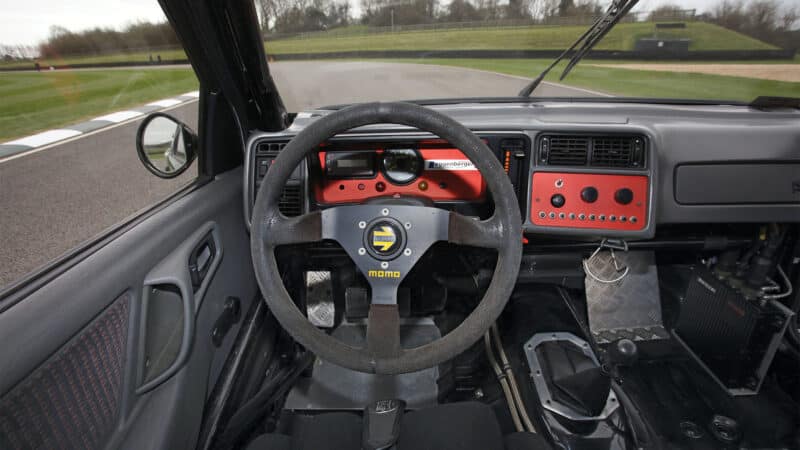
The RS500 office looks quite simple by modern standards
Hamish Gunn
It takes three more upshifts for me to know I love this car. It just feels so right, so purposeful, so exciting. I’d give anything to get to know it properly, but these laps are more than most people have ever had in this touring car hero, so you won’t hear me complaining.
What these few laps do tell me is that the RS500 feels as if it would be a transparent and intuitive car to hustle. One with which you’d form a quick, close bond. One you’d trust and one you’d relish pushing to its limits. A car you could race as hard as the tyres and your talent would allow.
A few days after my Goodwood drive I call Rouse and Soper – the main protagonists in that battle at Brands Hatch in 1988 – in the hope they’ll share some point-blank insight into what it took to wring the best out of the car. I’m pleased to say that, much like the RS500, they didn’t disappoint…
